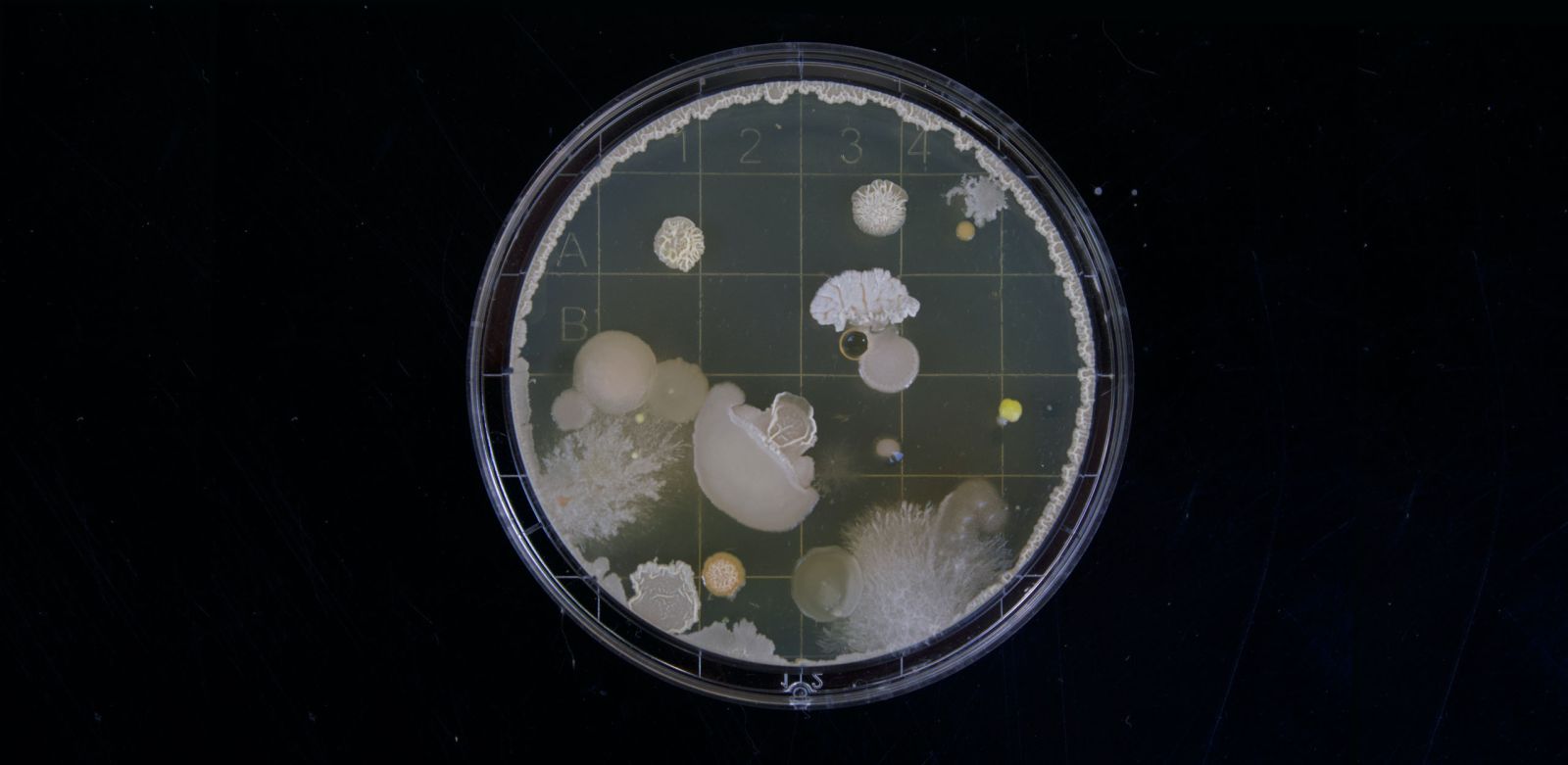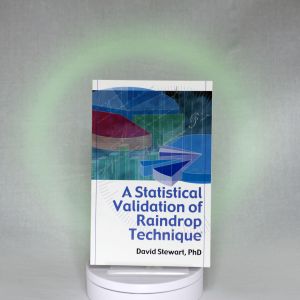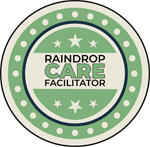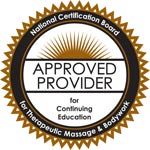Are Essential Oils a Cure for Monster Bacteria like MRSA?
Originally Posted January – February 2010
1. Are Essential Oils a Cure for Monster Bacteria like MRSA?
~^~by David Stewart, PhD
MRSA (pronounced “murr – sa”) is an acronym for “Methicillin Resistant Staphylococcus Aureus.” While Staphylococcus aureus is a common and relatively harmless inhabitant in the nasal passages of 25-30% of people, the MRSA form of staphylococcus is not so benign and once entrenched it does not go away. MRSA is a monster bacteria created by the medical use of man-made antibiotics and antibacterial agents employed principally in hospitals. It was first detected in the 1960s, only a few years after a new semi-synthetic form of penicillin (Methicillin) was introduced.
Hospitals are where this germ originated and is still where it is principally found. However, since 1982 MRSA has been found outside of hospitals, first detected among drug users in Detroit. Since then it has worked its way into other parts of the community, including playgrounds and gymnasiums. Thus, we not only have HA-MRSA or “Hospital Acquired MRSA” but also CA-MRSA or “Community Acquired MRSA.”
The portion of staphylococcal infections in the U.S. due to MRSA has risen steadily at an ever-increasing rate from 2% in 1974 to 63% in 2004. Once MRSA has been acquired, it is usually remains with the infected individual for life and can be fatal. Medical science has no effective treatment for MRSA infections.
A Relative Contracts MRSA
As a case in point, I have a relative, a retired career military man, who accompanied his wife to a hospital for some routine tests for her (not him). He had a small open scratch on his leg. During his visit, he acquired HA-MRSA through that small scratch. His leg swelled up and became inflamed. To date, no treatment has worked in stopping the spread of the bacteria in his body. It has now infected his entire leg and has worked up into his groin. He has been hospitalized more than once for treatments, all of which have been ineffective. It has been five years since his fateful visit to the hospital with his wife and he still carries the infection, which is slowly spreading.
I mentioned the possibility of essential oils to him, but he is a relative of mine and, as many of you have experienced, we have no credibility with our relatives. (Mark 6:4) He is also a devout believer in allopathic medicine. Having a Cadillac insurance program from being a veteran, he is content to keep receiving free medical treatment, even though it is not working. Unless he eventually resorts to a non-allopathic solution, he will most likely suffer from this infection for the rest of his life and, perhaps, even succumb to it.
Will Medical Science Find a Solution to MRSA?
Since the pharmaceutical approach to resistant strains of bacteria is to develop stronger and stronger antibiotics, there a pharmaceutical solution is not likely to ever be found because any antibiotic stronger than Methicillin would be more likely to kill the patient than the bacteria. Vancomycin is another antibiotic nearly equal in potency to Methicillin, but it, like Methicillin, can also be lethal to the patient and has not been found effective against MRSA.
Since it was the plethora of man-made antibiotics and antibacterial agents employed since the 1950’s that were the creators of MRSA and other resistant strains of bacteria in the first place, it is not likely that any medicine synthesized in a laboratory will ever be a solution. In fact, additional more powerful man-made drugs would most likely result in giving birth to even more virulent microorganisms. MRSA is a Frankenstein of the Medical System’s own creation. The solution to MRSA must come from outside the medical paradigm.
Are Essential Oils Effective Against MRSA?
Since Modern Medicine has no cure for MRSA and is, in fact, the cause of MRSA, the most likely means to combat MRSA is essential oils, which are among the most versatile and effective antimicrobial agents known. Not only do essential oils have powerful antibacterial properties without side effects, they are also incapable of producing resistant strains of bacteria as synthetic pharmaceuticals do.
There are two reasons essential oils do not and cannot create resistant strains of bacteria:
(1) Essential oils are extremely complex, comprised of hundreds of compounds, while laboratory-produced medicines are simple, usually consisting of only one or two active ingredients. Thus, bacteria have less difficulty in breaking the codes of a man-made medicine than in attempting to form a resistance to a natural medicine like an essential oil.
(2) Furthermore, essential oils are never twice the same while every batch of a pharmaceutical drug is always the same, reproduced with laboratory exactness. Hence, with repeated exposure to the same identical drug, bacteria eventually figure out its toxic properties and develope resistance. However, since essential oils are never identical from year to year, even if bacteria did figure out an oil’s effective components in a given year, they would have to start all over with the next crop.
The reason essential oils are not exactly duplicatible is because they are products of the vagaries of nature. The essential oils of a plant vary to adjust to their environment, just as human blood adjusts from morning to evening, from season to season, and from climate to climate. A plant’s oils are actually different from morning to night each day and from week to week throughout the growing season. Furthermore, the growing environment for a plant is never the same year to year. Some years are warmer than others, some cooler, some with more rain, some less, and if you compare the same species grown in different latitudes, altitudes, climates, and soils, you get even greater variations.
A basil plant will always produce a basil oil with the same suite of compounds, but from year to year and place to place, the relative proportions of the hundreds of compounds comprising basil oil will be different. Essential oils are like fine wines. Since no two years are the same, neither are two year’s wines the same even from the same vinyard. That is why vintners put dates on their bottles, since each year’s wine will a little different in taste, color, and fragrance.
Therefore bacteria will never figure out nor become resistant to an essential oil because they are too complex and because they are always changing. Man-made medicines are temporary, but God’s medicines are forever. Hospitals used to use the Oil of Onycha (Styrax benzoin) dissolved in alcohol (called Tincture of Benzoin) as their most effective antiseptic and antibacterial agent to cleanse and sanitize their wards.
If hospitals and medical doctors would have continued to use natural agents like Onycha, we would not have resistant strains of bacteria, such as MRSA, to threaten us today.
The Versatility of R.C.
R.C. Oil Blend has been applied successfully for pneumonia, for dissolving calcium deposits in joints, and to stop snoring, although its primary purpose is to relieve “Respiratory Congestion.” That is what the initials, “R.C.,” stand for. RC has been effective with many forms of congestion including colds, bronchitis, sore throats, sinusitis, coughs, lung infections, and respiratory allergy symptoms. However, in a series of laboratory tests at the Young Living Laboratory and Weber State University in Utah (See citation below), of 91 single essential oils and 64 essential oil blends, while Lemongrass was found to be the most effective single oil, R.C. was found to be the most effective blend.
Seventy-eight of the 91 single oils tested showed measurable inhibitory activity against MRSA. The top ranking oils, in descending order of effectiveness, were Lemongrass (Cymbopogen flexuosus), Lemon Myrtle (Backhousia citriodora), Mountain Savory (Satureja montana), Cinnamon Bark (Cinnamomum verum), and Melissa (Melissa officinalis). The most effective single oil, Lemongrass, completely inhibited all MRSA growth on the test plate.
Since Tincture of Benzoin (containing Oil of Onycha) used to be the principal antibacterial cleansing agent used in hospitals, as mentioned above, it would be interesting to see how Onycha measures up in killing the MRSA bacteria. Unfortunately, this study of 91 single oils did not include Onycha.
Fifty-two of the 64 blends tested showed measurable inhibitory activity against MRSA. The top three ranking oils, in descending order of effectiveness, were R.C., Motivation, and Longevity. The most effective blend, R.C., also completely inhibited all MRSA growth on the test plate.
R.C. is a blend of 10 species, including three species of Eucalyptus, as follows: E. globulus, E. radiata, E. citriodora, Myrtle (Myrtus communis, not Lemon myrtle), Pine, Spruce, Marjoram, Lavender, Cypress, and Peppermint. The Power of R.C. in combating MRSA is far beyond any of its individual constituents. In fact, two of the constituent oils (E. globulus and Myrtle) both scored zero in their ability to inhibit MRSA growth. Meanwhile, the effectiveness of R.C. as a blend was almost triples the effectiveness of the most powerful ingredient, which was Peppermint oil. This finding dramatically illustrates the power of oil blends over many oil singles. An oil blend usually has capabilities not manifested by any of its components, which is why blends are preferred by most aromatherapists for healing applications.
The same was true of Motivation, the second most effective blend. Motivation contains only four single oils: Roman Chamomile, Spruce, Ylang Ylang, and Lavender. Ylang Ylang, alone, had no inhibitory effect on MRSA whatsoever while the other three ingredients all scored less than half as effective as the combination of all four. Thus, the power of Motivation against MRSA was found to be greater than that of any of the individual species comprising the blend.
It is also interesting to note that the three most effective blends (R.C., Motivation, and Longevity) contained none of the five most effective single oils (Lemongrass, Lemon Myrtle, Mountain Savory, Cinnamon Bark, Melissa).
Can the Whole be Deduced from its Parts?
The conclusion is that one cannot deduce the properties of an oil blend from a knowledge of its components. Additional properties will always manifest in a blend that are not demonstrated by any of the singles that comprise it, while many properties of the singles do not manifest in the blend. This is why effective blends must be formulated intuitively and not by logic. All of Young Living’s blends were formulated by Gary Young, all by intuition, some even by way of intuitive dreams.
The same principle is true of single oils in that one cannot deduce the properties of an essential oil by knowing the properties of its individual compounds as isolates. Attempting to do so would be like trying to deduce the taste and texture of a chocolate cake from the taste and textures of the individual ingredients, viz. white flour, shortening, sugar, salt, eggs, baking powder, bitter cocoa, and vanilla extract. This is why scientific studies on the properties of isolated single compounds of an oil do not reveal the nature of the oil and why knowledge of a single oil does not reveal the nature of a blend containing that oil.
This principle is true even to the extent that a compound that is highly toxic alone can be safe, non-toxic, and therapeutic when occurring as an ingredient in an essential oil. Many aromatherapists who fear certain oils have been trained in a school that teaches the fallacy that properties of isolated compounds studied in laboratories apply to the natural oils in which they are found. Thus, many aromatherapists avoid perfectly safe and therapeutically effective oils because a laboratory has found one or more compounds in the oil that, by themselves, are harmful.
It is this fallacy upon which many aromatheray books post lists of “forbidden oils, never to be used in aromatherapy for any purpose.” These taboo lists include perfectly good oils like cinnamon, clove, basil, oregano, mountain savory, birch, wintergreen, cassia, tansy, pine, and even benign oils like vanilla. Of course, adulterated oils improperly distilled and grown with chemicals and insecticides can possess toxic properties. However, if one uses only Young Living oils, which are pure, unadulterated, properly grown, and properly distilled, one need not worry about toxicity.
It is interesting to note that Thieves Blend, which is a favorite antimicrobial blend that has been shown to be effective against a variety of bacteria, viruses, parasites, and fungi, is not particularly effective against MRSA. In fact, it is less than half as effective as R.C. This is surprising since Thieves contains Cinnamon Bark oil, which is one of the top three effective singles against MRSA. Yet Thieves, as a blend, was only about half as effective as Cinnamon Bark oil alone.
Practical Implications
The data cited here were all done in vitro in a laboratory on cultures of MRSA on test plates. While most of the oils tested are considered by the FDA as “GRAS” (Generally Regarded as Safe) for oral ingestion, no essential oil has been approved by the FDA for human use to treat a disease. The data definitely show promise for the possible treatment or prevention of MRSA infections, more promise than anything medical science has been able to find thus far. Furthermore, applying Lemongrass or R.C. has no negative side effects like antibiotics and no toxicities to humans like synthetic antibacterial agents.
So how can you make practical use of the research cited above? For one thing, if you are going to visit a hospital or spend time in a hospital, cover the soles of your feet with R.C. or Lemongrass. Rub one or both of these oil on your hands as an “antimicrobial oil glove” so that when you touch doorknobs, hospital furniture, elevator buttons, or public telephones, there will be a thin oil barrier between you and any possible MRSA contamination. MRSA is primarily spread by contact and not as an airborne pathogen. You might exercise the same precautions as in a hospital visit when visiting a public gymnasium where you are sharing workout equipment with strangers. Then when you go home, diffuse R.C. or Lemongrass, scrub your hands, and face with soap to minimize any exposure you may have had with invisible MRSA microbes.
Better to avoid going into a hospital altogether, if possible. Hospital personnel and pastors who regularly visit hospitals are at particular risk, not only to themselves, but also to their families since they can potentially carry MRSA into their homes.
If you do acquire a MRSA infection, realize that the medical profession can do little, if anything, to help you. However, you can safely apply R.C. or Lemongrass locally at the site of the infection and in any other way deemed advisable, even internally. Additional research is going to be required to determine the extent to which essential oils can prevent and/or cure MRSA infections in humans. At this time, Lemongrass and R.C. have demonstrated the greatest promise of all possibilities in combating the spread of MRSA and of bringing relief to those who have already contracted it.
Personally, if I were to be diagnosed with a MRSA infection circulating in my body, I would head for Gary Young’s clinic in Ecuador where essential oils can be administered intravenously. This is the only place in the world where essential oils are administered directly into the blood stream. I would request an I.V. containing a suspension of R.C. and/or Lemongrass oil. The clinic routinely administers oils such as Frankincense, Helichrysum, and Thieves intravenously, but to my knowledge an R.C.I.V. has never been administered to date. But if my system was found infected with MRSA, I would be willing to be the first to receive one.
Thanks to the Researchers
The scientific data cited in this article are published in an article entitled, Inhibition of Methicillin-Resistant Staphylococcus Aureus (MRSA) by Essential Oils in the Flavour and Fragrance Journal, 23:444-449, (2008). This journal is published by John Wiley & Sons, Ltd.
The research was carried out, compiled, and reported by Sue Chao, Gary Young, Craig Oberg, and Karen Nakaoka as a collaborative project between the Young Living Laboratory, Lehi, Utah, and Weber State University, Ogden, Utah. The publication of this research is the first step toward FDA approval of essential oils in MRSA prevention or therapy.
This type of research is highly hazardous to those who engage in it since you are working closely with a potentially deadly microbe or one that can infect you for life. Great precautions must be taken to minimize any possibility of infection among the researchers and laboratory staff. I want to personally thank the individuals named above who took a risk on behalf of humanity to provide us with this valuable information.
~^~^~^~^~^~^~^~^~^~^~^~^~^~^~^~
2. Ocotea Oil: Miracle Oil of the Amazon
(The following is based on an article circulated by the RAINBOW FOREVER TRUST)
Ocotea esssential oil is extracted from the flowers of the Ocotea quixos tree which is native to the deep Amazon. It has manifested the following properties for some individuals. It is available only from Young living Essential Oils. It is a Godsend for many people with sugar metabolism problems.
1. Lowers Blood Sugar* (Try taking 1-3 drops under tongue every 10 min until blood sugar is normal.)
2. Disinfectant
3. Anesthetic
4. Antidiarrhea.
5. Antibiotic (transcinnamic aldehyde)
6. Anti-inflammatory (has sesquiterpenes)
7. Can Eliminate Candida and streptococcal infections
8. Works with the liver; balancing metabolism.
TESTIMONIALS
(NOTE: The following testimonials have not been verified and are listed for anecdotal value only.)
1. Of 88 children tested- 66 had parasites, 22 had parasites and Candida. 1 drop Ocotea in 8 oz glass of water and diffused. Killed both parasites and Candida.
2. Helps with weight loss. Reduces cravings in the evening-1 drop in evening.
3. Clears fungus on foot. Tea tree didn’t work, put on Ocotea just once. 3 days later, the fungus was dead with just one application.
4. 69 year old female, couldn’t lower glucose below 150. Ingested 3 drops of Ocotea. Immediate change down to normal. It has been working for her since July. When she gets stressed, glucose goes up. She uses Ocotea, and brings it down. No side effects and feels better than when on the meds. 4 drops sublingually (under tongue) 4x a day for type 1 diabetic. She says she loves the energy it gives her. She’s able to focus.
5. One person had a fungal infection on neck and forehead. No creams helped. Dark stain on skin. Tried clove oil. Added Ocotea-50-60% better in a few weeks, and she’s had the fungal infection for years.
6. 67 year old female low energy, grumpy, irritable, not feeling well. Couldn’t think clearly, cold. Blood sugar 340 on 4/21. Supplements plus Ocotea. By 4/28 down to 210, by 5/7 blood sugar was 140. Such a small amount of Ocotea and such great effect.
7. Impacts emotional state, by insulin balancing, weight release.
8. Janet got diabetes 3 months after being vaccinated at age 4. Continues to improve with Ocotea, proving medical science incorrect. Juvenile diabetes can be corrected!
* NOTE: Many people have found benefits in regulating their blood sugar with Ocotea Oil. However, high blood sugar or diabetes can be due to several different causes, not all of which respond to Ocotea Oil. One will need to experiment on one’s self to see if Ocotea is effective in their case or not. The oil is safe to ingest a few drops at a time. No harm can come by experimenting.
How to Obtain Ocotea Oil:
Young Living is the sole source for Ocotea Oil. No other company has it.







